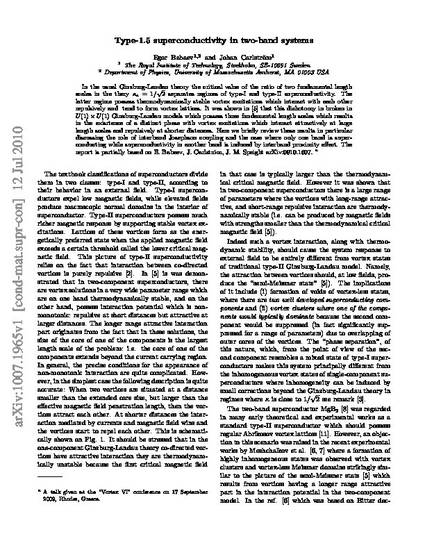
In the usual Ginzburg–Landau theory the critical value of Ginzburg–Landau parameter View the MathML source separates regimes of type-I and type-II superconductivity. The latter regime possess thermodynamically stable vortex excitations which interact with each other repulsively and tend to form vortex lattices. It was shown in [5] that this dichotomy in broken in U(1) × U(1) Ginzburg–Landau models which possess a distinct phase with vortex excitations which interact attractively at large length scales and repulsively at shorter distances. Here we discuss the influence of the Josephson coupling and that similar kind of superconductivity can also arise for entirely different reasons in superconductors where only one band is superconducting if this band interacting via a proximity effect with another band (the report is partially based on [1]).
Available at: http://works.bepress.com/egor_babaev/1/
